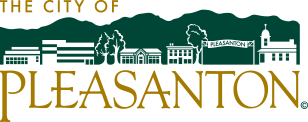FUNDING OUR FUTURE:
Protecting Pleasanton’s Quality of Life
Revenue Measure Feasibility
As a full-service city that provides essential services and facilities, the City works in a fiscally responsible manner to sustain the services that residents tell us they value most: rapid 911 emergency response services, safe neighborhoods, quality streets and roads, maintaining and preserving our parks and open spaces, supporting local businesses, and programs for youth and seniors. The City’s General Fund budget provides funding for a wide range of services and infrastructure. The City’s Long-Term Financial Forecast and the draft 10-Year Infrastructure Plan have identified budget deficits and significant funding needs for services and programs and repair and replacement in future years, as community-owned assets age. The City is now considering new revenue options to responsibly address community needs as City leaders also engage with the community to ensure residents’ voices are heard before important decisions are made. Additional information about this initiative and why the City is exploring it now can be found below.We Want Your Input!
Share your thoughts on Pleasanton’s priorities in our resident survey.Questions?
Take a look at our detailed FAQs section.For more information
View the spring 2024 special edition Pleasanton Progress newsletter that is about the City’s budget. View a mailer that was sent to all addresses in Pleasanton with registered voters in mid-February. For more information, contact Heather Tiernan at (925) 931-5044 or by email at PleasantonListens@cityofpleasantonca.gov.Community Meetings
- July 16, 2024 – City Council Meeting – Final decision of whether or not to move forward with a 1/2 cent sales tax measure on the November ballot
- June 18, 2024 – City Council Meeting – Presentation on polling results associated with revenue measure feasibility; Adopt FY 2024/25 Mid-Term budget (if not adopted at May 21 City Council Meeting); Review language for a potential ballot measure to increase General Fund revenue ( 1/2 cent sales tax)
- June 4, 2024 – City Council Meeting – Presentation on community survey results associated with City priorities
- May 21, 2024 – City Council Meeting – FY 2024/25 Mid-Term Budget Update
- May 21, 2024 – Budget Workshop – View the Agenda Report that introduce potential future service reductions if revenues do not increase
- December 19, 2023 – City Council Meeting – View the Agenda Report requesting funding for a community engagement campaign
- December 5, 2023 – City Council Meeting – View the Agenda Report introducing the topic of a potential revenue measure and a list of revenue options presented.
FAQs
What are the City’s greatest needs?
- PUBLIC SAFETY: Rapid 911 emergency response, maintaining police patrols and fire protection services to keep neighborhoods safe, emergency/disaster preparedness, crime prevention programs, and updating and modernizing police information and dispatch systems.
- STREETS & ROADS: Repairing potholes, repaving and maintaining roads, improving pedestrian safety with safe sidewalks and crosswalks.
- COMMUNITY INFRASTRUCTURE: Maintaining and replacing aging infrastructure, including facilities such as police and fire stations, the City’s library, cultural arts center, senior center, and other city buildings.
- PARKS AND OPEN SPACES: Maintaining City parks, repairing park systems and equipment, and replacing aging paths and trails.
- ECONOMIC VITALITY: Supporting small and local businesses, and attracting new businesses, jobs, and economic activity.
- SERVICES FOR YOUTH AND SENIORS: Maintaining after-school programs for children and teens, and senior services and programs, including maintaining library hours and providing access to books and educational technology.
What is the City doing to manage its finances responsibly?
Why does the City need more funding?
What has the City done to contain costs?
The City has been working to proactively address projected budget deficits with a combination of reduced costs and new revenue.
Steps taken to reduce costs include freezing some unfilled positions, combining departments to increase operational efficiency, and planning to cut more than $2 million from the upcoming year budget. An impact fee study is also underway to ensure the City recovers the cost of programs and new development.
Why is Pleasanton considering a 1/2 cent sales tax ballot measure?
What would funds raised by a possible sales tax measure go toward?
- Maintaining rapid 911 emergency response, neighborhood police patrols and fire protection services to keep neighborhoods safe, emergency/disaster preparedness, crime prevention programs, and updating and modernizing police information and dispatch systems.
- Repairing potholes, repaving and maintaining local roads, and improving pedestrian safety with safe sidewalks and crosswalks.
- Maintaining and replacing aging infrastructure, including facilities such as police and fire stations, the City’s library, cultural arts center, senior center, and other city buildings.
- Maintaining City parks, repairing park systems and equipment, and replacing aging paths and trails.
- Supporting small and local businesses, and attracting new businesses, jobs, and economic activity.
- Maintaining after-school programs for children and teens, and senior services and programs, including maintaining library hours and providing access to books and educational technology.
Does the City have an Expenditure Plan for spending money raised by a new measure?
Why are you looking at a general sales tax measure rather than a specific tax measure?
How much would a new measure cost?
While no decisions have been made yet, if the City Council votes to place a half-cent sales tax measure on the ballot and local voters approve it, the cost to an individual would depend on the amount of qualified goods or services he or she purchased. In this case, the new tax would add a new ½ cent for every dollar spent. Some examples: if a family spends $10,000 a year in taxable purchases, there would be an additional $50 in sales tax with the half-cent rate; the additional cost to purchase a $1,200 television would be $6; the purchase of a $100 item would add 50 cents; and a $50 dinner at a local restaurant would add 25 cents more. If approved by voters, the sales tax would be paid by everyone in the community, as well as visitors making qualified purchases in Pleasanton.
What would a sales tax apply to? What’s taxed and what isn’t?
How much new funding would a ½ cent sales tax generate for the City?
Why aren't we talking about water?
The City’s Water Fund is separate from the City’s General Fund; the cost to operate and maintain the City’s water programs comes from user fees, not the General Fund. Providing reliable, safe drinking water is a top priority for the City, and we have prioritized a number of water related projects over the past 18 months to ensure we continue to deliver quality water throughout our community. Increased revenue from a recent water rate adjustment will help stabilize the City’s water fund and was necessary to secure financing to complete some of the projects and improvements. The City is considering additional funding sources for water specific projects including state and federal grants, a lawsuit against PFAS contributors, partnerships with Zone 7 for cost sharing, and potential future bond measures.
The budget deficit being discussed now is in addition to the gaps in funding for water projects, and being addressed separately.
How long would a sales tax last?
How much of the revenue generated by a local sales tax goes to the State?
Where does the money from our current sales tax go?
- CA Sales & Use Tax – 6.25%
- State General Fund/Realignment – 5.5%
- County Public Safety – 0.5%
- County Transportation Fund – 0.25%
- City/County Local Tax (direct to Pleasanton) – 1%
- Transaction & Use Taxes: Other Taxing Agencies – 3%
- BART – 0.5%
- Alameda County Transportation Commission – 0.5%
- Alameda County Transportation Sales Tax – 0.5%
- Alameda County Health Care Services Agencies – 0.5%
- Alameda County Children’s Health and Child Care – 0.5%
- Alameda County Transactions and Use Tax – 0.5%

When would a local tax measure be placed on the ballot?
What happens if the measure being discussed makes it to the ballot and passes?
What happens if the City doesn’t pass a revenue measure?
IF voters were given the option to approve a local revenue measure and they chose to reject it, the likely result would be that some City programs and services would be at risk of reduction or elimination.
The City is considering a number of cuts to programming and services if we cannot bring in additional revenue to our General Fund. No decisions have been made about what specific cuts will be made, and won’t be made until later this year, but items the City is considering at this time include but are not limited to:
- Reducing personnel across all departments, including police and fire
- Deferring maintenance of parks, open spaces, and other city areas
- Reducing library days and hours
- Reducing pool hours
- Canceling special events, including the annual Hometown Holiday Parade
- Delaying permit processing times
Without additional facilities funding, City facilities will continue to age and deteriorate and, at some point, become unsafe and unusable for the community.
